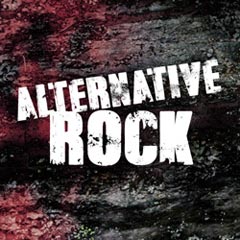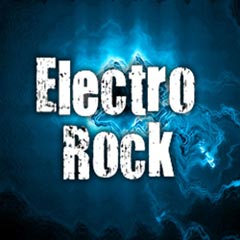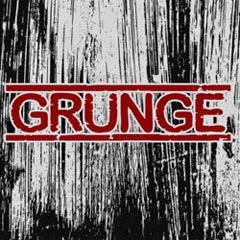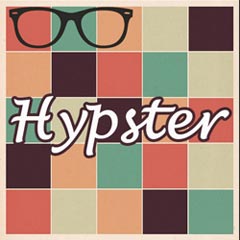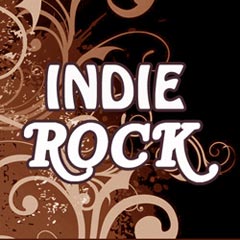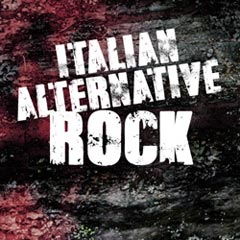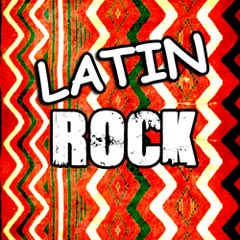Indie rock
ON AIR - PROGRAMMING
The Indie Rock Movement: A Musical Revolution
Music is an integral part of our lives. It has the power to evoke emotions, inspire change, and bring people together. However, over the years, commercialism has taken over the music industry, dictating the type of music that is released to the masses. This has left a particular genre - Indie rock - to suffer. Indie rock is more than a genre; it is an attitude that refuses to conform to industry standards, but it has been shattered into different sub-genres due to commercialism. Despite this setback, the indie rock movement has continued to grow and has become a musical revolution that is captivating, creative, and full of surprises.
Indie rock is a musical genre that advocates independence and self-expression. It is a genre that encourages creativity and innovation, making it one of the most exciting genres in the modern music world. Unlike other genres that are often defined by a particular sound or structure, indie rock is characterized by its DIY approach. It is a genre that does not rely on big record labels or mainstream media coverage to get noticed.
The indie rock movement began in the '80s and '90s when bands like Sonic Youth, Pixies, and Pavement made their mark. These bands had a unique sound and were not afraid to break the rules. They paved the way for other bands to follow in their footsteps and helped to create a vibrant and diverse indie rock scene. Today, indie rock has evolved, and with the advent of the internet, it has become even more accessible to anyone with a guitar and a dream.
Indie rock is a genre that celebrates individuality and diversity. It is a genre that is inclusive and accepts all races, genders, and sexual orientations. It is a genre that encourages musicians to experiment with different sounds, instruments, and styles. Indie rock is a perfect example of how music can bring together people of different backgrounds and create a sense of community.
Despite the challenges, indie rock has remained true to its roots and has continued to thrive. It has become a voice for the voiceless, speaking out against social injustices, and advocating for change. It has given a platform to artists who would have otherwise been ignored by the mainstream media. It has proven that music can be a force for good and can bring about change in society.
Indie rock is more than just a genre; it is a musical revolution that is challenging the traditional music industry. It is a genre that celebrates individuality, diversity, and inclusivity. Indie rock is a perfect example of how music can bring people together and create a sense of community. The indie rock movement has come a long way, and its future looks bright. With new and diverse perspectives contributing to the genre, indie rock will continue to captivate, surprise, and inspire listeners for years to come. So, the next time you're looking for something different from the mainstream standards, give indie rock a chance. You might just discover your new favorite band.
History of the indie rock
The name indie rock is the abbreviation of independent rock, a genre that includes independent groups and low-budget labels that produced a sort of garage and low-fi music. Such music didn’t relate to a specific genre in particular, thus including many music genres, scenes, subcultures and stylistic features that are all associated for their being independent from the pop/rock mainstream music. The indie scene is not just a musical genre as it is often believed, but rather it is a series of elements that define a system of values, drawing inspiration from the experience of punk. During the last decades, starting to make a distinction between large and small indie labels has been possible. The former are labels that have been exploiting artists and popular musical trends commercially. The latter are less commercial, more authentic and local labels, closer to the different regional scenes. The paradox is that when an indie label becomes successful it is automatically rejected by its fans; the true indie label is ignored by the market: this entails that a real indie artist will never be successful and will always write music that won’t get popular. Beside the clear paradox, the relative independence of those bands and labels has paved the way to musical experimentation: being influenced by punk, psychedelic music, post-punk, hard rock, garage, country and many others, indie music has developed many interesting subgenres.
Indie music was born in the 1980s in UK and in the United States. There are several common factors that link the two scenes: punk and post-punk labels, authenticity and creative independence, the low-fi philosophy of DIY and home recording. Either with a tape recorder back then or with a laptop and a sound card today, the aim is delivering that dry and essential sound we’re accustomed to associating with indie music.
In UK, the indie scene has existed since the 1980s, when guitar-based alternative and jangle pop bands dominated the independent music section of the charts. In the United States, the term indie was associated with the post-punk and the new wave scenes, forerunners of the college rock.
Let’s have a look now ate the two scenes separately.
In UK, the publication of the jangle compilation C86 marked the beginning of the British indie. The tape included song from Primal Scream, The Pastels, The Wedding Present and many others. The main forerunners of indie pop are Josef K and Orange Juice and groups like The Jesus and Mary Chain, which combined noise sounds from The Velvet Underground and Beach Boys-like pop melodies, or New Order, born from Joy Division’s post-punk and experimenting with techno and house music. Other bands led the way towards indie pop; the shoegazers are among those, always bent on their stompboxes, without even interacting with their supporters while playing. Some of these bands refer to My Bloody Valentine, Slowdive and Ride, to their droning riffs, distortions and heavy feedback that washed away the vocal parts. Not to mention the Madchester scene, an alternative, psychedelic, dance and funk scene that developed around New Order’s and Factory Record’s nightclub The Hacienda, with artists like Happy Mondays, The Stone Roses, Inspiral Carpets, Northside, Paris Angels, 808 State, James, The Charlatans, and A Guy Called Gerald.
In the United States, the college rock will be of inspiration for the birth of US indie music and grunge especially. The genre owes its name to the college radios that broadcast bands like Pixies, Hüsker Dü, Minutemen, Meat Puppets, Dinosaur Jr., and The Replacements, R.E.M. and The Smiths. Other important bands are 10000 Maniacs, The dB’s, The Housemartins and The La’s. Noise rock and punk bands like Sonic Youth, Swans, Big Black and Butthole Surfers con be included in the original definition of indie music. Even though indie music was originally included in the alternative genre, when the important grunge and Britpop bands entered the mainstream in the 1990s, the concepts of alternative and indie music changed. Indie lost part of its original meaning, from being a counter-culture it became a no man’s land, cyclically treaded by bands which entered and exited the mainstream for different reasons, from contract dissolutions to voluntary artistic choice.
In 1990s, many different subgenres and styles developed: low-fi with Beck, Sebadoh and Pavement; eclectic folk and rock with The Elephant 6 collective, Neutral Milk Hotel, Elf Power and Of Montreal; post-rock forerunners like Talk Talk and Slint, that mixed jazz and electronic music; math rock with Polvo and Chavez. But also the Riot Girll subgenre with Bikini Kill, Bratmobile, 7 Year Bitch, Team Dresch and Huggy Bear; the minimalist and droning space rock, with Spaceman 3, Spectrum, Spiritualized, Flying Saucer Attack, Godspeed You! Black Emperor, and Quickspace; the melodic suffering of sadcore music with Arcade Fire, Belle & Sebastien and Rufus Wainwright.
Other indie rock subgenres are:
Garage rock and new wave revival: The Von Bondies, Electric Six, The Dirtbombs and The Detroit Cobras; Radio 4, Yeah Yeah Yeahs, Electric Frankenstein, The Rapture; Billy Childish and The Buff Medways, The (International) Noise Conspiracy and The 5.6.7.8's. With a 1960s rock and roll sound, influenced by Delta blues we find artists like The White Stripes, The Strokes, The Von Bondies, Eagles of Death Metal, The Vines, Yeah Yeah Yeahs, The Hives and The Black Keys.
Post-punk revival movement: influenced by new wave, 1970s punk and 1980s post-punk of The Clash, Gang Of Four, Television, Wire, it was made popular by bands like Franz Ferdinand, Arctic Monkeys, The Libertines, Dirty Pretty Things, Babyshambles, Razorlight, Editors, Bloc Party and The View.
Indietronic: at the beginning of the 1990s, Stereolab and Disco Inferno inspired a genre that would further develop thanks to technology innovation in the new millennium, with bands like Broadcast, Justice, Lali Puna, The Postal Service, Ratatat, and the project BOBBY. In UK, this blend came to be known as new rave, a genre including bands like Klaxons, Trash Fashion, New Young Pony Club, Hadouken!, Late of the Pier, Test Icicles and Shitdisco.
Baroque pop, inspired by 1960’s folk music and Pet Shop Boys record Pet Sounds. This subgenre features quiet vocals and orchestral arrangements in bands like Arcade Fire, Danielson Famile, Sufjan Stevens, The Decemberists, Broken Social Scene, Islands and Stars.
New Prog, a complex, experimental, sophisticate style of rock music with bands like Mew, Muse, and Porcupine Tree.
New Weird America or Freak Folk, a more experimental version of New Folk with quirky, psych-inflected folk songs and ballads, with artists such as Devendra Banhart, Joanna Newsom, Animal Collective and Six Organs of Admittance.
Psych-Folk, the psychedelic strain of New Folk, featuring avant-garde noise, drones, dissonance, and natural field recordings, with artists like No-Neck Blues Band, Brightblack Morning Light, Wooden Wand and the Vanishing Voice.
Psychedelic pop, the 1970s psychedelic pop revival with artist as The Shins, Of Montreal and The Flaming Lips.
Disco-Punk/Dance-Punk, a mix of New Wave music and punk rock aesthetics, with LCD Soundsystem, The Rapture, !!!, Out Hud, Liars, Radio 4, Death from Above 1979, Lost Sounds and The Stiletto Formal.
Twee pop, featuring simple, sweet melodies and lyrics, and jangling guitars, with bands like The Boy Least Likely To, Architecture in Helsinki, Belle & Sebastian, Tullycraft, Camera Obscura and Girls in Hawaii.
Musical collectives like Broken Social Scene, The New Pornographers, Arcade Fire, The Polyphonic Spree, The Brian Jonestown Massacre, dEUS, The Hidden Cameras and Islands.
The commercial success in the new millennium came for four bands: The Strokes, with their début album Is This It in 2001; The White Stripes, with their third album White Blood Cells in 2001; The Hives with Your New Favourite Band in 2001; The Vines with the record Highly Evolved in 2002. Indie music, or at least what was left in the quarrel between purists and critics, was worldwide popular, paving the way to a second wave of indie bands like The Black Keys, Black Rebel Motorcycle Club, Modest Mouse, The Killers, Interpol, Kings of Leon, Bright Eyes and Death Cab for Cutie.
In UK, the mainstream indie music scene welcomed bands such as The Libertines, Franz Ferdinand, Bloc Party, Editors, The Fratellis, Placebo, Razorlight, Kaiser Chiefs, The Kooks and Arctic Monkeys, among the first to use social networks to promote their music. In Australia and New Zeland we find Jet, The Datsuns and The D4. Many indie bands, excluding Kasabian and Arcade Fire, have experienced a sharp decline due to the slow and relentless death and transformation of this genre. Such event has been emblematically described by The Guardian in an article explaining the concept of indie landfill: the proliferation of generically indie pop/rock bands has wasted that no man’s land lying between the definition of the different music genres, the land of indie music.
6 Ways to Make Money as an indie rock Musician In the Pandemic
3 Great Apps to Learn to Play a Musical Instrument (aka I want to be a musician in the indie rock scene)
3 Great Apps to Learn to Play a Musical Instrument (aka I want to be a musician in the indie rock scene)
What are you thinking about?

